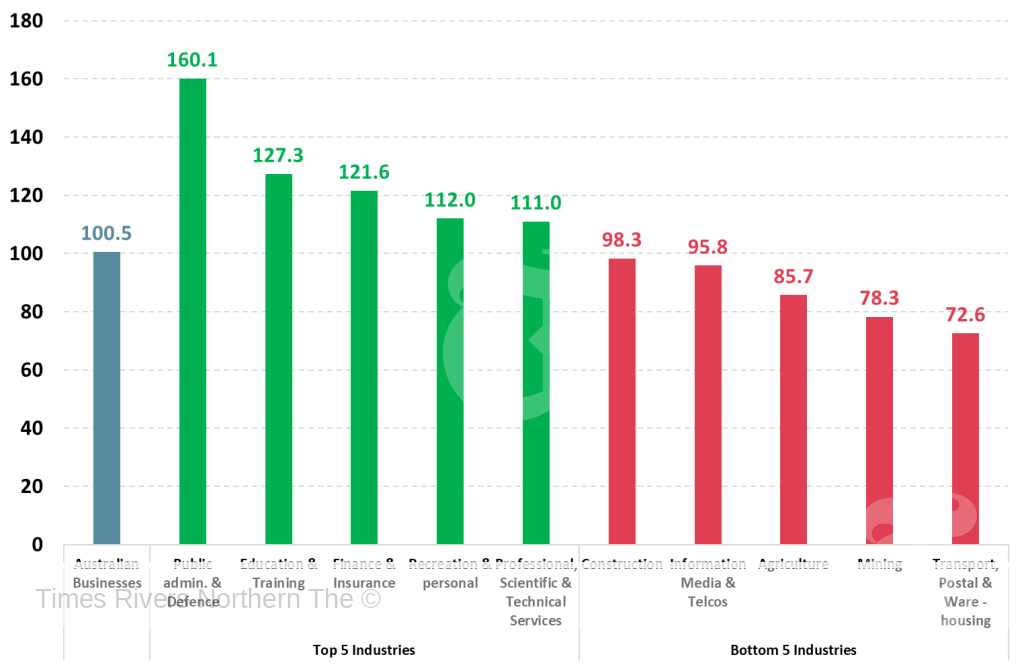Gold Coast Emerges as Economic Powerhouse Outpacing Nation’s Capitals
By Ian Rogers
The Gold Coast is solidifying its position as a national leader in economic growth, with a new report revealing it outpaced all mainland capital cities in 2023. The Gold Coast Economic Outlook 2024, launched during Gold Coast Business Week, highlights the city’s rapid rise, driven by diversification, population growth, and robust business investment.
Exceptional Economic Growth
The report shows the Gold Coast’s Gross Regional Product (GRP) grew by 3% in 2023, almost double the forecast of 1.6%, making it Australia’s fastest-growing economy in the post-pandemic era. This positions the city ahead of Greater Perth, Brisbane, Adelaide, and the Australian Capital Territory in GRP growth.
Between 2021 and 2023, the Gold Coast achieved a cumulative growth rate of 5.5%, more than double Sydney and Melbourne’s 2.5%, and exceeding Brisbane’s 4.5%. The city’s economy is now valued at $45.38 billion, surpassing forecasts by $630 million.
Per Capita Productivity
The Gold Coast’s economic contribution per capita stands at $68,134, exceeding forecasts by 13%. This impressive figure is attributed to increased efficiency and a growing number of high-income residents.
Diverse and Resilient Economy
Mayor Tom Tate attributes the city’s economic success to its diversified economy, strong population growth, and record employment levels.
“The Gold Coast has become much more than just a tourism destination,” says Tate. “Our city offers diverse employment opportunities, strong business investment incentives, and a favourable environment for economic activity, creating a sustainable cycle of growth.”
- Employment growth surged 6.93% in 2023, driven by new businesses relocating to the region and existing ones expanding.
- The Gold Coast’s population, currently at 666,000, is forecast to reach one million by 2040.
The city’s diversified economy provides resilience against sector-specific downturns, enabling faster recovery from economic shocks, such as those experienced during the pandemic.
A National Leader in GRP Growth
The Gold Coast is poised to maintain its economic momentum, with the report forecasting 10.07% GRP growth between 2024 and 2028, outpacing Greater Brisbane (9.04%), Queensland (7.93%), and the national average (7.9%).
Business Confidence and Investment
The city leads in business capital reinvestment, recording a 13.3% reinvestment rate in 2023 compared to negative rates in Greater Brisbane and Queensland. By 2028, this rate is projected to climb to 14.3%, significantly outpacing Brisbane (5.47%) and the national average (9.2%).
“Reinvestment signals confidence in future growth prospects and enhances productivity, driving overall economic output,” the report states.
Sectoral Growth Highlights
Technology
- Leading economic growth with a 50% growth rate in 2023, up from 20% in 2021.
- Forecast to grow by over 90% annually by 2028.
Screen Industry
- The film and television sector is projected to grow by over 40% annually by 2028, supported by city-led initiatives like a Creative Industries Precinct in Miami and new film studios at Yatala.
Sports
- Growth set to double from 30% in 2023 to over 70% annually by 2028.
Professional Services
- Driven by population and business growth, this sector is on track to become the third-fastest-growing industry in the region.
Legacy Industries
- Tourism, Manufacturing, and Health remain critical to the economy despite slower growth, contributing significant dollar value to the region.
Case Study: Ryan Aerospace
Gold Coast-based Ryan Aerospace, a leading developer of high-tech flight simulators, demonstrates the city’s innovation-driven growth. The company, which won the 2024 Queensland Premier’s Export Award in Advanced Technologies, recently made major capital investments to enhance supply chain control and productivity.
Positioning for the Future
The report emphasises the Gold Coast’s competitive advantage due to its untapped economic capacity compared to larger cities.
“While cost-of-living pressures are felt nationwide, the Gold Coast mitigates these through diverse employment opportunities and strong business growth,” says Mayor Tate. “It’s no surprise the Gold Coast continues to attract investment, residents, and visitors.”
With its robust growth trajectory, diversified economy, and strategic investments, the Gold Coast is well-positioned to sustain its momentum and redefine itself as a key player on Australia’s economic map.
For more local news, click here.





 Tweed Shire News2 years ago
Tweed Shire News2 years ago
 Motoring News2 years ago
Motoring News2 years ago
 COVID-19 Northern Rivers News3 years ago
COVID-19 Northern Rivers News3 years ago
 COVID-19 Northern Rivers News3 years ago
COVID-19 Northern Rivers News3 years ago
 Northern Rivers Local News3 years ago
Northern Rivers Local News3 years ago
 Health News4 years ago
Health News4 years ago
 COVID-19 Northern Rivers News3 years ago
COVID-19 Northern Rivers News3 years ago
 NSW Breaking News3 years ago
NSW Breaking News3 years ago


















